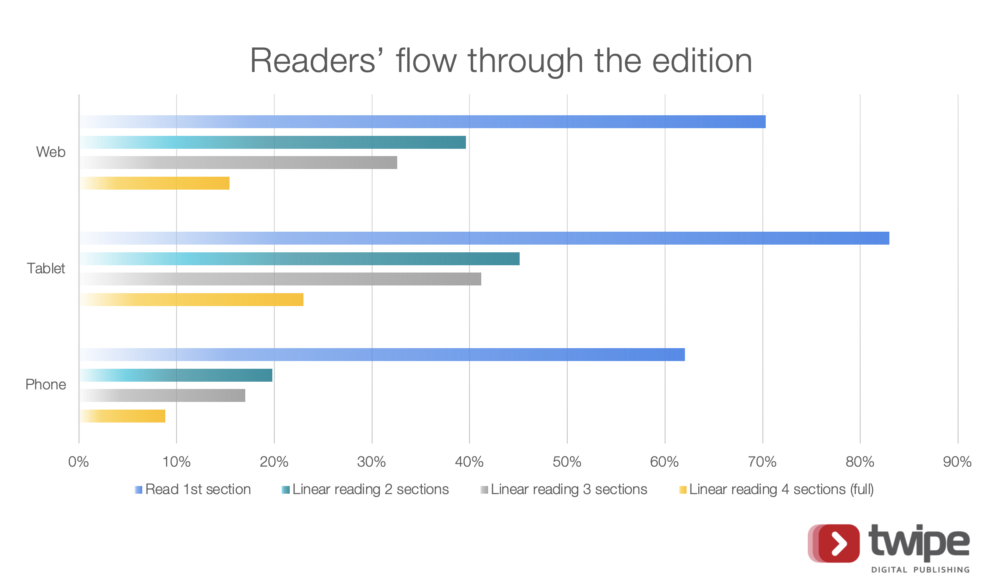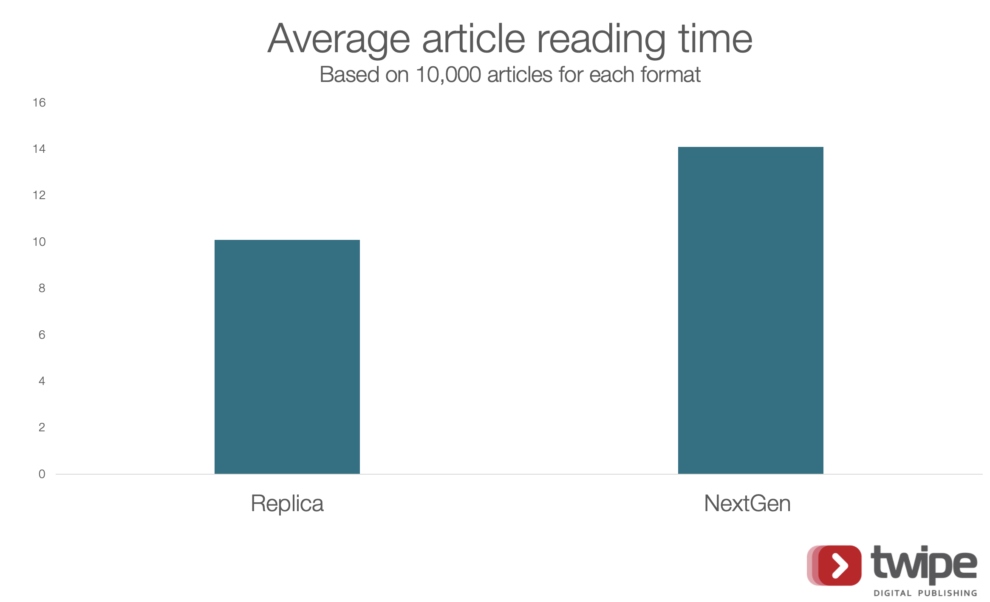Blog
3 learnings from University study of different digital edition formats
There is no doubt editions are making a comeback. Last year both Reuters Institute and Poynter talked about the resurgence of edition formats and for everybody following the INMA Subscription Summit in the past two weeks, we heard the idea that replica is a thing of the past being challenged also by Asian publishers.
While previous research has shown that half of readers prefer edition products, in the sense of a finishable and structured bundle of content versus an updated stream of news articles, there is still work to be done to define the right formats in which we can publish editions. At Twipe we explore this from the perspective of the readers’ digital maturity and connection to the print newspaper and we identify two types of editions as most common: Replica Editions and NextGen Editions.
To better understand the reading habits behind these two digital edition types, we partnered with students from KU Leuven who studied data from one of our Belgian customers and wrote a thesis on the topic. Join us today as we share 3 key insights from their research.
Guiding newspaper readers on the journey from print to digital edition
As the digital habits of readers have matured, so have the products serving edition readers. Newspapers can choose to offer a classic replica of the print newspaper, featuring pinch to zoom on PDF pages, along with digital native article lightboxes, or more digital-first editions using NextGen technology to display the print newspaper content in a mobile-optimised manner.

Depending on the digital maturity of their edition readers and the target audience they want to serve, some publishers opt for Replica-only formats, such as Le Monde, NextGen-only formats such as The Telegraph or for a hybrid solution, with both Replica and NextGen editions in the same interface. This last option is meant to serve newspaper edition readers on their journey from print-first to digital-first reading habits. Such a hybrid product was the subject of the analysis done at KU Leuven.
Reading preference correlated with device type digital edition
The analysis showed that mobile users more often opt for NextGen editions which makes sense as this technology was specifically designed with small screens in mind. On the other hand, readers using web browsers to access digital editions have a high preference for Replica editions, with only 7% of readers preferring NextGen.

More in the middle are tablet readers, with different habits depending on the operating system. Android tablet users are slightly more inclined to use NextGen (52%), while iPad readers prefer the Replica format (60%). The operating system is an important factor also for the phone NextGen readers with Android users being more prominent than iOS (72% vs 59%). Important to note is that reading preference is also strongly correlated with the default option presented to the reader. We have seen that most readers will stick with the option that is presented to them at the first install.
Mobile readers consume content in a more fragmented way
In designing edition products suitable for mobile, careful attention must be paid to understanding the reader’s habits of consuming content on such devices and helping them find their journey through the variety of articles published.
It is interesting to see that there are readers who consume the digital edition in a more fragmented way, maybe only reading a few specific sections in the newspaper. The data show readers on mobile devices are more likely to read only one section in the newspaper — this is especially true for readers on iPhones, with more than a third (34.15%) only reading one section.

In contrast, readers on tablets are more likely to read linearly through the whole newspaper, while readers on web browsers fall somewhere in between. Readers who pick only one section most often read only the local news or sports sections. A difference in journey is noticeable also for the different formats with 18.4% of the reading sessions of Replica being linear through the whole newspaper compared to 13.7% for NextGen who are more likely to be fragmented by readers jumping across sections.
These are important considerations in designing products that allow straight-forward navigation of content on mobile devices. It is one of the features that received most attention in the new digital edition we developed together with The Telegraph. Enabling readers to find their way through the rich content (150+ articles) offered daily by The Telegraph is an interesting product design challenge.
NextGen articles, with images, are read longer
One of the clear differences detected between Replica readers and NextGen readers is the amount of time spent reading. On average readers on Replica editions spend 10.1 seconds reading per article, while readers of NextGen editions spend on average 14.3 seconds. It is also interesting to see how this correlates with device type, as readers on web editions are the quickest to stop reading while readers on tablets spend the longest time.

Beyond edition type, article type has an impact on reading time as well. Articles with images are read on average for longer than articles without images. This difference is more pronounced in NextGen editions, as articles without images are read on average for 10.5 seconds while articles with images are read on average for 17.1 seconds.
The study indicates there is a significant difference in how readers browse digital editions based on whether they are using NextGen or Replica format. From the way the readers navigate the edition to the way they engage with specific articles, it is important to keep the readers’ habits on different devices and formats in mind when designing digital products.
If you are interested in learning more about the Twipe Platform for Replica or NextGen Edition Publishing don’t hesitate to contact our team.
This article is based on the Master Thesis Business insights for NextGen and Replica reading, a study of digital newspaper editions by Thijs Jonckheere & Henri Mestdagh, KU Leuven 2020
Other Blog Posts

Stay on top of the game
Subscribe to Twipe’s weekly newsletter to receive industry insights, case studies, and event invitations.
"(Required)" indicates required fields

